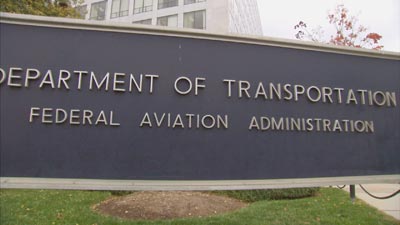
The Federal Aviation Agency says it has about 4,300 inspectors responsible for aviation safety, overseeing flight operations, pilot certifications, maintenance and manufacturers. But ever since deregulation, questions about the FAA's ability to effectively watch over such a vast and dynamic industry have routinely been raised by federal auditors, including the U.S. Government Accountability Office and the Department of Transportation's Office of the Inspector General.
Six fatal regional airline accidents have occurred between 2003 and 2009 -- the Continental Flight 3407 Buffalo crash in February 2009 being the latest one -- and questions are again being raised about the FAA, particularly its ability to cover regionals, which have grown so rapidly over the past decade.
To better understand how the agency's resources are targeted, FRONTLINE asked the FAA how many inspectors are assigned to oversee each commercial airline, or Part 121 operator, and how many of those are assigned to regional carriers. Surprisingly, the FAA says it doesn't have those numbers at headquarters and wouldn't be able to tell FRONTLINE how many inspectors are dedicated to overseeing the regional airline industry.
It's particularly surprising because these questions aren't new.
In 1992, after a similar string of regional accidents, there was a call for additional federal oversight over smaller airlines. The U.S. General Accounting Office released a report -- "Commuter Airline Safety Would Be Enhanced With Better FAA Oversight" [PDF] -- which showed that accident rates had increased 67 percent between 1990 and 1991 and FAA inspectors weren't effectively uncovering safety violations.
In response, the FAA beefed up its total inspector force, which now numbers about 70 percent more than in 1992. It also initiated a new inspection and enforcement approach called the Air Transportation Oversight System [ATOS] which was designed to improve its capabilities by more efficiently identifying and targeting the highest safety risks.
But implementation of ATOS has been problematic. More than a decade after its initiation, the Inspector General of the Department of Transportation, Calvin L. Scovel III, says there are serious deficiencies in the system. At a U.S. Senate hearing about FAA oversight following the Buffalo crash, Scovel testified that in 2005, inspectors failed to complete a quarter of their planned ATOS inspections -- half of which were regarding previously identified risks.
Moreover, Scovel said, ATOS was designed to cover the major airlines and had not been widely adopted at the regional level. Not until recently did the majority of inspectors covering the regional airline industry begin using a risk-based system. Scovel said inspectors told his office that the system needed to be reconfigured to work with the regionals.
In the case of Colgan Air, the National Transportation Safety Board [NTSB], which investigates causes behind fatal accidents, recently raised concerns about the FAA's ability to effectively oversee the company during important periods of growth and expansion.
In the year before the 3407 accident, Colgan added a fleet of new Bombardier Dash-8 Q400 turboprop planes, growing by 30 percent to satisfy a new contract with Continental. The addition required new pilots, new training for a much more sophisticated plane, and new safety manuals and procedures.
However, the FAA added no inspectors to help survey Colgan's growth. Moreover, NTSB noted that the principal FAA inspector in charge was learning how to fly the new plane at the same time as the company's pilots.
A Defense Department audit of Colgan in December 2007 documents concerns about the company's own safety management during the run-up of the Q400. The DoD regularly audits airline companies with which it contracts for transportation of its personnel. Concerns about safety management at Colgan were so serious that the DoD placed the carrier on a special watch list and required corrective actions just 14 months before the Buffalo crash.
Some mainline carriers like Continental rely on DoD audits for information about the operational safety of their regional partners. But according to the NTSB, the FAA's principal operations inspector at Colgan didn't request copies of the full DoD audit, saying he did not find it related to regulatory issues.
Congress has asked the Department of Transportation for another review of FAA's oversight of regional airlines. But after its yearlong investigation of the Buffalo crash, the NTSB has already reached one conclusion:
"The current Federal Aviation Administration surveillance standards for oversight at air carriers undergoing rapid growth and increased complexity of operations do not guarantee that any challenges encountered by the carriers as a result of these changes will be appropriately mitigated."
Stats: The FAA's Coverage
| Inspectors | 4,279 |
| Air Carriers | 97 |
| Active Pilots | 614,000 |
| Repair Stations | 4,856 |
| Manufacturers | 1,600 |
Source: FAA, 2009.